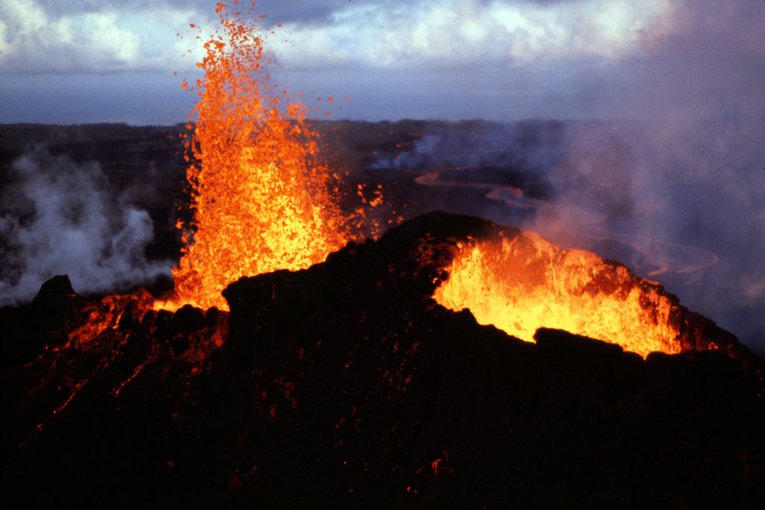
Feb. 10, 2019
Research Highlight
Reevaluating Mercury as a Marker for Ancient Volcanism
A recent study suggests mercury anomalies in the rock record may not be tied to volcanic outgassing

A new study suggests that mercury anomalies in the rock record might not be a marker for massive volcanism.Image credit: USGS/Hawaiian Volcano Observatory/J. D. Griggs.
A recent study examines the use of sedimentary mercury (Hg) as a geological marker in studying massive, ancient volcanic events in Earth’s history. These powerful volcanic events are thought to have had global effects that helped shape the history of life on Earth, and may have been tied to some of our planet’s largest mass extinctions. The study reports new Hg geochemical data across the Toarcian Oceanic Anoxic Event (T-OAE), which occurred roughly 183 million years ago during the early Jurassic.
It has been previously suggested that Hg could be used as a marker for these events, and that Hg anomalies in the rock record are the result of volcanic outgassing. The recent study reveals that Hg anomalies are located near landmasses and restricted to shallow water. The researchers believe that the anomalies result from terrestrial sources and cannot be tied directly to volcanic emissions. They suggest that Hg anomolies need to be re-evaluated as markers for volcanic activity.
The study, “Terrestrial sources as the primary delivery mechanism of mercury to the oceans across the Toarcian Oceanic Anoxic Event (Early Jurassic),” was published in the journal Earth and Planetary Science Letters. The work was supported by NASA Astrobiology through the Exobiology Program.